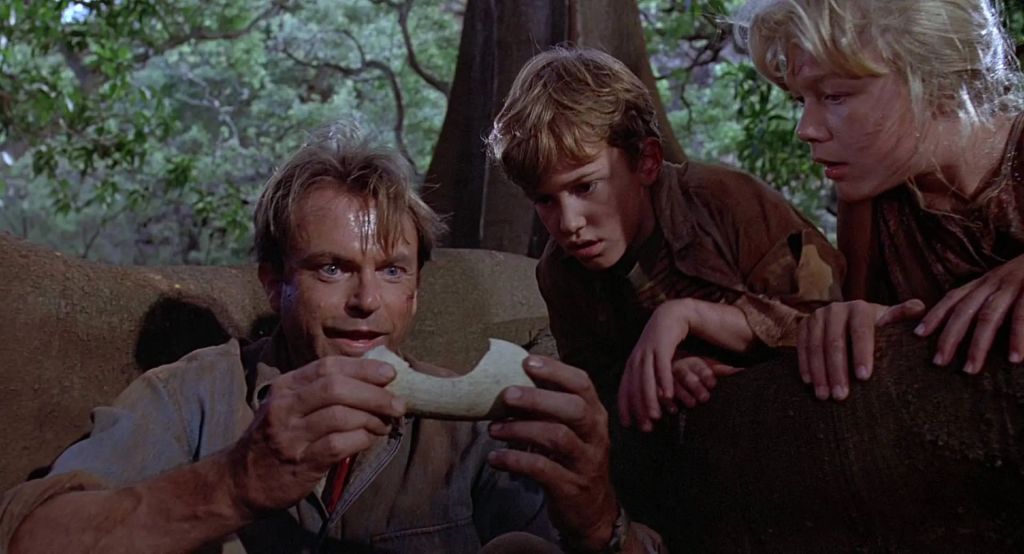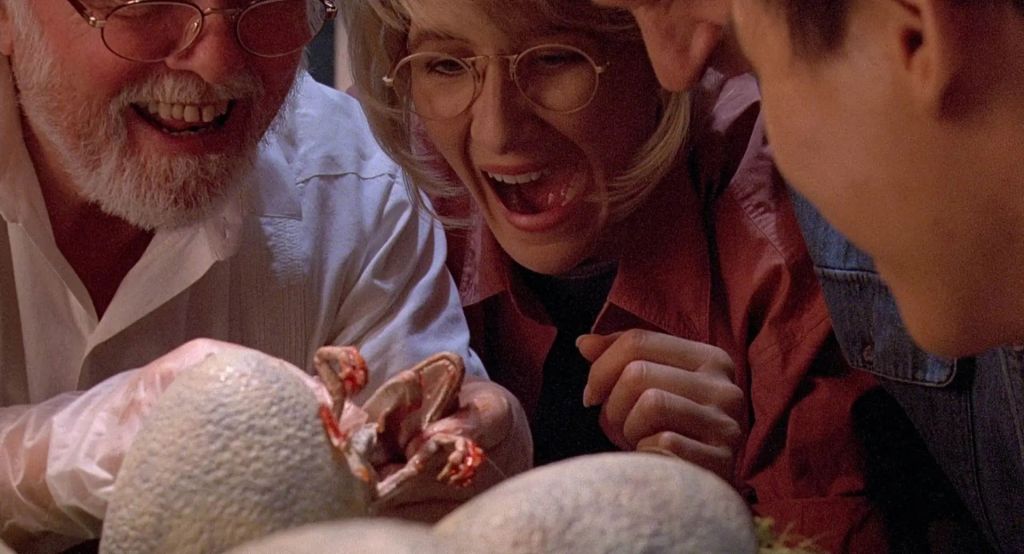
Jurassic Park has been stunning fans for over 32 years, yet we still find reasons to argue and debate about it. It shows this movie’s lasting impact, not just on one generation but several. Beyond elements like the Lysine contingency and how the T-Rex pen suddenly has a giant hole in it, one hotly debated moment surrounds the nature of the dinosaur eggs Dr. Alan Grant stumbles upon in the first movie. These eggs were the first significant indication that the breeding protocols didn’t work as intended. However, fans are confused, concerned, and argumentative about which type of eggs Grant actually found. Interestingly, the books didn’t leave this question up for debate, outright telling readers what kind of dinosaur laid the eggs. So now the question is, do we apply the book’s logic to the movie?
Any fan who’s watched their favorite novel get the adaptation treatment knows that significant changes can (and will) be made in the process, and Jurassic Park is no exception. For example, in Michael Crichton’s original book, John Hammond was a brutal capitalist, not some idealist who didn’t think his actions through. The movie also swapped around character traits and roles, resulting in a more even balance. While most fans can agree that the changes proved useful, it still raises the question of whether we can apply evidence from the books.
[RELATED: The Original Jurassic Park 4 Script Sounds Nuts (Would It Have Been Better Than Jurassic World?]
Jurassic Park’s Wild Egg Debate

Following a series of unforgettable events, Dr. Grant, Tim, and Lex begin their trek back to the park’s main welcome center, which they hope will bring them safety. At this point, Dr. Grant spots something very concerning – a nest of eggs. Given that the island is supposed to be full of female dinosaurs, it could be believable that these eggs are infertile, with one major exception, as they had hatched. If the cracked shells leave any doubt, the little footprints will erase any lingering misunderstanding. All of this is to say viewers learned alongside Grant that the failsafe was, well, failing.
Here’s where the big debate occurs, as the movie never explicitly states what type of dinosaur eggs they were. We can infer from the scene that the dinosaurs in question couldn’t be the Brachiosaurus; the eggs are too small, and the nest is tucked between two roots, so it’s just not possible. But that raises an even bigger question: What are they if they’re not Brachiosaurus eggs? Grant and the kids haven’t gotten that far, so we can probably assume they’re still in the same enclosure. This spells bad news for containment procedures.
Eagle-eyed fans quickly point out that the eggs portrayed in this scene are the same color, shape, and size as eggs seen in two other instances. The first occurred earlier in this movie when the crew watched the hatching of a baby Raptor. The second instance played a major role in Jurassic Park III. In this movie, Billy steals a few raptor eggs in hopes of earning extra funding for himself and Grant. This begins a whole subplot, but the key detail to focus on is the type of egg: Velociraptor eggs. It is probably the worst dinosaur to have lost and bred on the island.

A few passing phrases in Jurassic Park back this theory up. When introducing the raptors, the crew explains two key pieces of information. First, the raptors weren’t originally in this dense and high-security pen; they had been moved after testing out the fences. Second, they originally bred eight raptors. Slipping in that “originally” predisposes viewers to think about growing numbers.
Naturally, as this is an ongoing debate, some fans take issue with presenting these pieces of evidence as fact. After all, we have no proof that the eggs belong to Raptors. Likewise, we have no proof the Raptors ever escaped their enclosures before the system reboot. A lot has to line up to make this possible, so it feels too far-fetched. Plus, the smaller prints may indicate Gallimumus prints, which sounds believable, especially considering the herd that Grant and the kids soon encounter.
[RELATED: Jurassic Park Fans Are Still Confused by This Line Over 30 Years Later]
What the Jurassic Park Book Has to Say

As mentioned, the Jurassic Park novel doesn’t leave any room for interpretation regarding these eggs. In the book, the Raptors escaped fairly early in the process. It’s why mentioning eight of the dinosaurs at first is so important, because unobserved, these numbers went from eight to thirty-seven. Yes, many Raptors were free-roaming on the island at a certain point, so it’s easy to see how that posed quite a problem.
By being precise about these eggs, the Jurassic Park novel establishes a clear problem and sets up the sequel. However, we’re still divided on whether evidence from the books should be applied to the movie. As we already discussed, the adaptation made many changes to the novel’s plot, and it never outright told readers that the raptors escaped. There’s too much left open to interpretation for this case ever to be closed. Now, if Steven Spielberg would like to weigh in and close this debate once and for all, that would be fantastic.
Stream Jurassic Park on Hulu.
The post Jurassic Park Fans Are Still Arguing About This Moment 32 Years Later (The Answer Is in the Book) appeared first on ComicBook.com.
